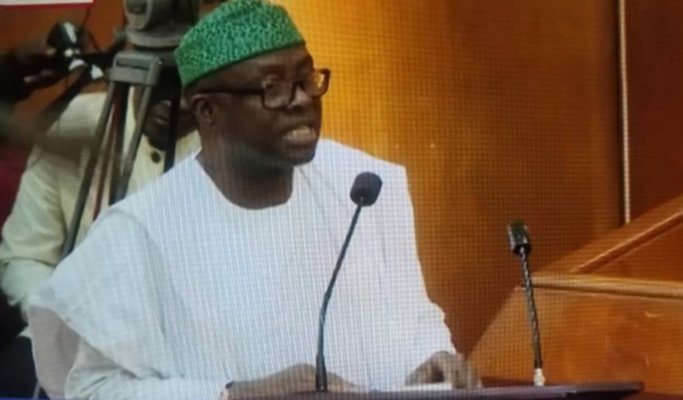
EDIDIONG IKPOTO writes that not even a multibillion naira fund set up by the Federal Government has been able to revive the textile sector that once had over one million Nigerians in its employ.
Nigeria’s textile industry, like several sub-sectors under the manufacturing sector, has suffered a rapid implosion over the years, declining from a wealth-creating segment of the economy in the 1980s to one that is now literally crying for help.
According to available records, by the early to mid-1980s, Nigeria had well over 180 textile mills employing more than one million people. Some of these mills included: the United Nigerian Textile Limited, Aswani Textile, Afprint, Asaba Textile Mills, and Edo Textile Mills, among others.
During this time, the textile industry was able to produce a wide range of products, including printed fabrics such as wax and African prints, guinea brocade, lace/embroidery, shirting, furniture fabrics and towels, blankets, tarpaulin, carpets/rugs, fishing and mosquito nets.
It was also well-known for various types of yarns such as cotton, synthetic, rayon and sewing threads amongst others. Unfortunately, most of these products are now historical fragments that have become fond memories.
Today, there are fewer than three full-fledged textile mills in Nigeria, an almost seismic implosion of an industry that played a huge contributory role to Nigeria’s economy three decades ago.
But how did this happen? How did the once virile Nigerian textile industry quickly lose steam and slide into hibernation like a boxer who took a brutal knockout blow? The answer to that question is perhaps as convoluted as the series of events that led to the industry’s decline.
According to experts, with the adoption of the Structural Adjustment Programme in 1986 by the Gen Ibrahim Babangida regime, the economy became highly deregulated, thereby leading to the gradual demise of a once booming sector.
This downward spiral of the industry has been so consistent that over the last 30 years, virtually all the gains have been lost. Today, Nigeria stands a country miles away from its contemporaries like China, India and others who have evolved with the times to build a strong, vibrant textile industry.
Other factors mooted as major contributors to the fall of the textile industry include smuggling and the protracted import culture that has deflected the spotlight from production to consumption.
Over the years, however, there have been a number of attempts by the government to revive this ailing sector and return it to the days when it was a vibrant contributor to the economy.
One of such efforts came in April 2016, when a former Minister of State for Industry, Trade and Investment, Aisha Abubakar, took a tour of a few surviving textile mills in Lagos State. Abubakar visited Spintex Mills Nigeria Limited, Lucky Fibres Plc, and Nichemtex Plc, all in Ikorodu, Lagos State.
Her mission was to critically evaluate the state of the industry, and feel the pulse of key players on the challenges facing the industry with a view to devising viable solutions.
That visit did not turn out to be the life wire industry players had hoped it would be, as there was no tangible gesture by the government (in the immediate aftermath of the visit) to address the problems it had come to evaluate.
The first real effort by the government to paper over the cracks came in 1986 when the government established the N100bn Cotton, Textile and Garment Revival Fund to revitalise the sector. This fund was rejigged during the Olusegun Obasanjo administration.
During the Goodluck Jonathan regime, serious efforts were made to bring the sector back to life.
In 2013, the then Vice President of the Nigerian Labour Congress and General Secretary of the National Union of Textile, Garment and Tailoring Workers of Nigeria, Comrade Issa Aremu, said over 38 firms had benefitted from the fund, with 8070 jobs saved.
Even the Bank of Industry, BOI, which manages the fund, said about 60 per cent of the fund had been disbursed. The more the fund was disbursed, however, the more the textile and garment sector died.
in 2020, the Central Bank of Nigeria announced a N50 billion special mechanism fund to revive the ailing textiles industry.
The funds were to be administered by the BOI at 4.5 per cent interest rate and would use any of the CBN-approved non-interest instruments for refinancing of projects, long-term financing for the acquisition of plant and machinery and working capital for the beneficiaries.
The announcement came via a statement containing the guidelines for the revival pill, tagged “Central Bank of Nigeria Non-Interest Guidelines for Intervention in the Textile Sector.” It was signed by CBN Director, Financial Policy and Regulation Department, Kelvin Amugo.
The apex bank said the funds would be used to resuscitate the ailing textile sector, restructure facilities and provide further facilities for textile firms with a genuine need for intervention.
According to the CBN, the seed fund, which is a one-off intervention, would terminate by December 31, 2025, with the maximum financial amount pegged at N2 billion for a single obligor for new facilities and N1 billion for refinancing.
The regulator said the plan to turn around the textile sector was perfected at the August 7 meeting between the CBN Governor, Godwin Emefiele and textile mill owners.
The resolutions reached at the meeting were that the textile mills should articulate the status of their BOI Cotton Textile and Garment Loans, stating their outstanding balances, tenure, interest rate, interest payment and the assistance being sought from CBN.
The CBN listed activities to be covered under the intervention as operations in the CTG value chain. They included: cotton ginning (lint production), spinning (yarn production), textile mills, and integrated garment factories (for military, para-military and schools and other uniformed institutions).
The eligibility criteria for participation in the scheme indicated that any textile company with an existing facility in the books of BOI under the CTG scheme, any textile company with existing facilities in Deposit Money Banks/Non-Interest Financial Institutions, textile companies that were not participating under the Small and Medium Enterprises/Restructuring/Refinancing Fund were qualified while projects financed before June 2009 (inception of the BoI CTG Loan) would not be eligible to participate.
Hence the CBN was, once again, a rejigging of the CTG Fund.
It said emphasis would be on facilities that were indicating weaknesses arising from tenor, structure or facing cash flow difficulties.
However, despite this intervention, the industry has continued to move at a lethargic pace. In fact, what is often regarded as textile in Nigeria today includes: rug, carpet, cap, among others.
The President of Nigerian Textile Manufacturers, Hamma Ali Kwajaffa, X-rayed Nigeria’s fall from grace to grass in the textile ecosystem.
He said, “100 mills have closed from 1980 to date. If you go to the market now, we have no access to even our local market, and we cannot export. The counterfeit people from Asia, especially China, if you go to the market now, they have taken our designs, filled our markets and are selling it cheaper. We are using backward integration in textile, which means we are using cotton, but they will go and bring in polyester clothes, which is cheaper.
“The way forward is to have bilateral relations with China to tell them that they are bringing cheaper options to flood our market. To make matters worse, they are also giving them incentives to export. When they export to other countries, their governments give them incentives to the extent that they will come here and sell cheaper, and still make huge profits.”
Asked if the industry could challenge its Asian counterparts with regard to productivity, he said, “Yes, precisely, but we can’t right now because we have infrastructure decay. South Africa, Ethiopia, Egypt, to name a few in Africa, have lower electricity tariffs than Nigeria.”
According to the NTMAN president, the government must take conscious steps toward ensuring that there was an enabling environment for local manufacturers to operate.
He continued, “What they did was put a N100bn fund for the industry, through the Bank of Industry. The thinking was that we were producing bad quality and not in high quantity. It was blamed on the machinery that we were using, that it was obsolete. Government gave that fund to retool our machinery. They provided the machinery to produce quality and quantity, but then we have no market access, because of the coming of goods from China and India.
“Even with the AfCFTA, they are looking at Nigeria with a huge population like the Nigerian market, but we manufacturers in Nigeria don’t have access to the Nigerian market because of influx of cheaper materials from China.
“Nigeria should be able to improve on infrastructure. South Africa has about 50,000MW of electricity. Nigeria is trying to manage 5,000MW. How can we compete in Africa? And we call ourselves the economic giant of Africa? In most of these countries, they even have industrial parks, they have textile parks in Ethiopia and their goods can compete with those in Europe. The key issue is tackling infrastructural decay in Nigeria and sell at par with our competitors.”
In the same vein, an economist at the Pan-Atlantic University, Lagos, Associate Professor Olalekan Aworinde, blamed poor infrastructure and weak trade policy as the primary reasons why cash injection into the industry would not yield the expected results.
According to him, the government would need to intensify efforts toward creating a favourable production climate for manufacturers by improving energy supply and improving security in order to boost the confidence of industry players.
He said, “It’s because of the deficiency in the trade policy in Nigeria. Based on what is happening in the industry, people coming in with cheaper products, and production doesn’t come cheap for manufacturers of textile in Nigeria.
“Irrespective of the intervention in the sector, if there is no adequate power supply, these people will still end up being high-cost producers, because they have to run on diesel, and all these come with associated costs. It’s going to affect the cost of production of the manufacturers, and it is what they produce that also determines what they sell. When they produce and people are not buying due to high prices, the tendency is that what they produce may not match the quality of what comes from China and the rest.”
A market analyst, Mr Ike Ibeabuchi, noted that Nigeria should focus on areas of competitive advantage, urging the government to assist those in those areas with competitive and comparative advantages.
He further said that the country would not be able to produce textile products at competitive prices at the moment, stressing the need to only focus on areas where it would be able to compete favourably.





